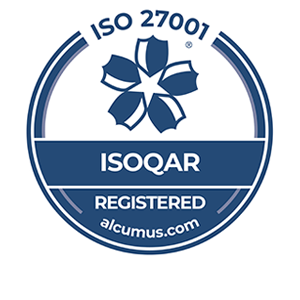As a relatively new member of the insights industry with only a few years of experience, hearing that I had been selected to present in front of my peers as a Young Disruptor was pretty nerve-wracking. The AQR Young Disruptors are three individuals from member organisations with bold new ideas and inspirations to share. Each Young Disruptor is given 10 minutes on stage at the conference, after which attendees vote on the presentations to crown one winner each year.
I’d like to take this opportunity to thank the AQR for giving me the opportunity to present, as well as Eimar MacGarty of The Behavioural Architects – who acted as my mentor, arranged by The Nursery - and Lyn Roseman of Now You’re Talking, who ran an excellent public speaking workshop for all three Young Disruptors.
As you can imagine, I was pretty nervous. However, despite that – I found that the whole day was a fantastic experience, filled with interesting and thought-provoking ideas, from diversity to politics to artificial intelligence all within qual research.
Connecting Through Online Communities
Fortunately, my presentation was one of the first on that day – which gave me the opportunity to speak and then sit back and absorb new knowledge for the remainder of the conference. What I chose to focus on in my session was the power of connection through online communities. The story behind my slides, and the theme of my talk, is actually testament to the fact that inspiration for innovation can come from just about anywhere.
In this case, I was looking for a captivating quote to sum up my thoughts on the challenges qualitative researchers face with online communities. And I found it whilst listening to the radio on my daily commute to work. The quote is actually from the lyrics to a song by Armin van Buuren; “everyone’s connected, but no one’s connecting.”
| Tweet This | |
| Inspiration can come from anywhere. When developing an idea, sometimes the best source of inspiration is taken from a completely unrelated field. |
Somehow, this pop song lyric managed to capture the essence of the fairly serious point I wanted to make. As consumers, we are all connected, but are the connections we have meaningful? Do they fulfil us as human beings? And is there a role for communities to play in bringing people together around brands or topics? The more I thought about it, the more the idea formed; perhaps what attracts individuals to join online communities isn’t the money or the rewards (though that’s certainly a part). Perhaps there’s something greater that they are able to provide through a sense of belonging and agency.
As I continued to develop writing my script, I came across some staggering statistics about loneliness. For example, did you know that loneliness, living alone and poor social connections can all have the same health risks as smoking 15 cigarettes a day? Not only this, but over 9 million people across the UK report to always, or often, feel lonely. That’s more than the population of London! Or, to put it another way, that is 1 in 10 people.
Loneliness and the lack of connection, even in the age of the smartphone, clearly isn’t something that will be solved overnight. So, whilst we can’t save the world in a day, my 10 minutes focused on presenting online communities, not only as a place where data and insights can be gathered, but as a place for social good, creating meaningful and healthy connections by giving people a shared sense of identity around their consumption habits or fandoms.
Over the course of my talk, I laid out the three key reasons why online insight communities are able to act in this capacity:
- A community is always on, always open (24-hours a day).
- The environment is all about creativity, collaboration and sharing.
- Communities promote member-to-member interactions.
I also hope that the most powerful message I was able to communicate is that online communities can create such powerful connections that they have resulted in real life friendships. Over my short time as a moderator and facilitator, I have seen members arrange meet up at sporting event, or suggest they connect in-person within the same city – all from a shared sense of identity.
As well as my presentation, I was joined by two other fantastic Young Disruptors– J.J. Tomlinson and Jack Ellingham. Although we presented on vastly different topics, all of us came with one goal – to inspire the crowd with our fresh perspectives on existing qual methods of research.
Qualitative Research Themes in 2019
The rest of the day was split into three themes: inclusivity, humans & androids, and politics & polarisation. We were treated to a range of speakers from ThinkTank, Discovery Research, BAMM, Big Sofa, BritainThinks, Jigsaw, and more. Throughout all of these sessions, the key takeaway for me was that despite the constant advances in technology, high-quality qualitative research still relies on the skill of the team running the project and ability to connect.
Similarly, I also noticed a desire to understand the turbulent forces shaping our society right now. Whether that’s greater political division or an increased focus on inclusivity, society is undergoing some major changes. And rich, qualitative research is the perfect lens through which to study those changes.


















